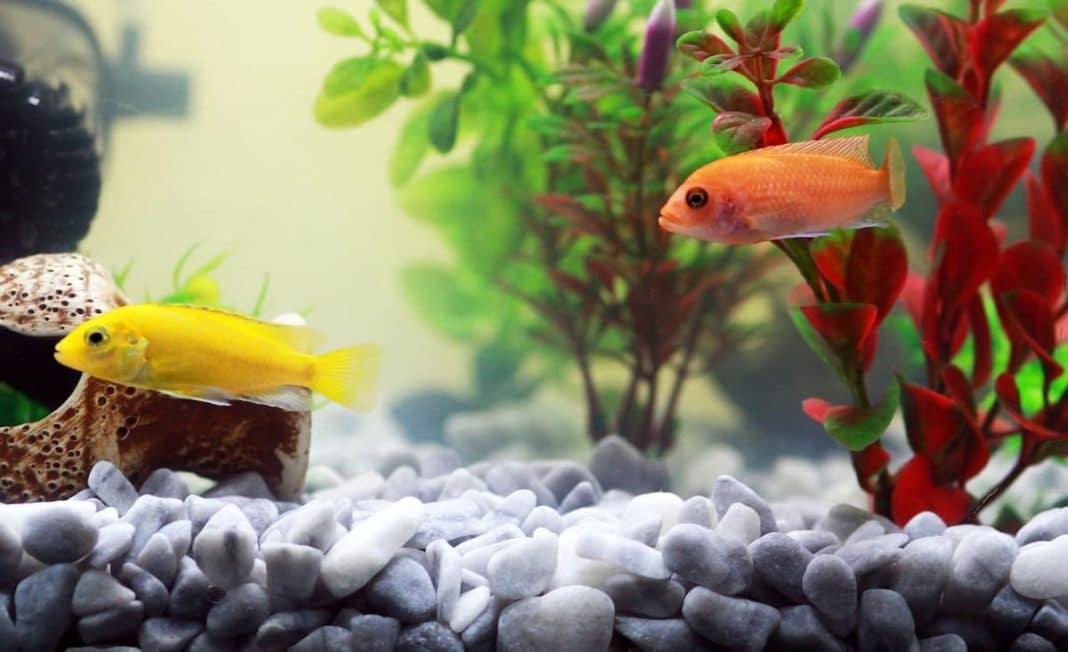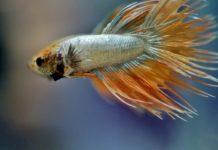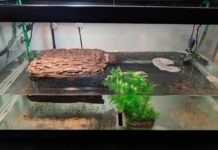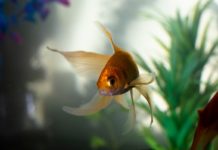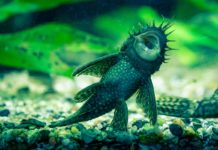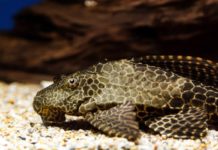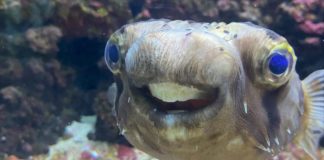If you’ve had an aquarium for a while, you’ve probably tried to figure out whether to use sand, gravel or soil for your tank’s substrate. But have you ever considered putting more than one type of substrate in your tank?
Using Gravel And Sand In The Same Aquarium
You first need to consider what substrate your fish and invertebrates need. For example, catfish and shrimp make especially high demands on the selection. Once you’ve addressed this question, you can then think about what colour(s) the substrate should be. Some fish species, such as the discus, prefer darker substrates compared to lighter substrates. Catfish, such as armored catfish, much prefer finer substrates which help them to search for food. Some creatures like shrimp, like to turn over each stone twice in search of their food. This could make it difficult with a very coarse substrate. Don’t forget what plants you want to use as some plants grow best in soil while others prefer natural nutrient-storing substrate.
You’ll probably found out that your aquarium has varied requirements and that using two different substrates could be useful. This is can be done if you take a few things into consideration.
Using Two Different Substrates
After you’ve added a nutrient layer, it now needs to be covered with the substrate(s) you’ve chosen. If the substrate consists of the same variety, distribute it evenly at a thickness of around 3-5 cm.
If you want to use two different substrates together in an aquarium, you should make sure that they never mix. Only substrates with the same grain size should be mixed. The reason you shouldn’t mix different grain sizes is that the substance will become so compressed it would create a layer of concrete at the bottom. However, it’s possible to use sand and a coarser substrate together.
To keep different substates apart, you can build terraces or zones with acrylic glass or stones to keep the two substrate types separate from each other. This not only looks better, but it’s also easy to maintain. Combinations of soil and sand or Manado with sand zones are very popular.
If you’re thinking about starting a new aquarium and wondering which substrate to choose for your new setup, there’s good news in that you don’t always need to use the same substate. Every aquarium has its own unique layout and style. Some serve more of a functional purpose while other setups are more for aesthetics.
This article will cover the pros and cons of the three main types of substrates used in the freshwater aquarium hobby: gravel, sand, and soil and their uses.
Gravel Vs Sand Vs Soil
There are so many sizes, shapes, and colors of substrates to choose from for your tank’s setup, the majority fall under three types: gravel, sand, and soil. This section will go over each of the strengths and weaknesses of each type of substrate.
Gravel
Gravel consists of stones that can range anywhere from tiny pebbles to small river stones. Gravel can even be a mix of many different sizes and types of rocks.
Gravel is usually the substrate most first-time aquarists choose as it’s less expensive and comes in a variety of styles.
Important: keep in mind that some types of gravel can have sharp and ragged edges. This can be very harmful to bottom-feeding fish if they were swimming against the sharp stones when digging around their faces to forage for food through them.
A big advantage of having gravel in your aquarium is that it better allows for live aquatic plants to be planted. While gravel isn’t the best substrate for a fully planted tank as it doesn’t provide minerals that help plant growth, it’s very useful to help anchor plants down and isn’t too dense for roots to spread throughout the bottom of the aquarium.
Gravel is chemically inactive, meaning it doesn’t change the water parameters of the aquarium it’s in. Some hobbyists prefer this, especially if they have fish that’re very sensitive to water parameters.
Another pro is that gravel is harder to kick up in the aquarium or sucked up by a siphon during maintenance because of its heavier weight and size. However, as the size of gravel is larger than sand, there are spaces between the stones where debris can fall into. Fish waste and uneaten food can tend to get trapped in the gravel, so it is important to vacuum this type of substrate during regular water changes.
Sand
Sand is much finer and softer than gravel and is made up of tiny particles of rocks, shells, and other earthly materials. As the granules are so small, sand can make for a better substrate for bottom-feeding fish or fish with soft bellies. The extra-fine particles are a lot easier on fish compared to other substrates.
While there may not be as much of a variety as gravel, there’s still a wide selection of colors and sizes to choose from, with the most common colors being white, black, and light brown. If you’re looking to give your aquarium a more natural look, you can get beige toned natural sand.
As sand is finer, it compacts together so that debris from the aquarium stays on top of the sand. This makes it easier to clean: simply hover a siphon over the debris and it’ll be taken care of.
Sand can be harder to clean as it’s light enough to get sucked up into the siphon along with the detritus, so use extra caution when siphoning to avoid removing too much sand from the tank. It’s normal to need to add extra sand after every water change to fill in some bald spots.
Another negative is that sand can occasionally get kicked up into the water and proceed to get sucked into filters and pumps, potentially damaging the equipment. To prevent this from happening, extra care is needed when filling the tank during water changes. Too strong of an impact from the water being poured into the aquarium could make a mess of the tank and leave sand flying everywhere in the water.
Soil
Aquarium soil is typically a clay-based substrate full of nutrients that is better for plant growth. It’s the best substrate for aquarium plants and a must-have for a high-tech planted tank. Plants that feed through their roots will thrive when they are planted in aquarium soil.
Unlike other substrates, soil doesn’t have as many variations options and usually comes in only a few sizes and colors. The sizes of the granules are generally large enough for water to flow through, so it adds a lot more surface area for beneficial bacteria to grow on.
Getting The Best Of Both Worlds!
The good news is that there’s no rule stating you have to pick only one substrate for a tank!
In the world of aqua scaping, it’s quite common to use more than one substrate in an aquarium. For example, if you want to add sand to give your tank a bright and clean look, but you want your aquarium to be heavily planted, then you can use both soil and sand. This could be done by placing soil in the back and sand in the foreground. You can place the live plants in the aquarium soil so they can grow in a nutrient-rich substrate. Whereas, the sand will be more visible at the front of the tank.
It’s recommended to use rocks or other forms of decoration between each substrate as a barrier to prevent them from mixing.
Designing the layout of an aquarium is like a work of art, so there’s no right or wrong way of doing it. You can be as creative as you want, as long as you’re using the right materials. Now that you know you can use more than one substrate, you can go ahead and think of a new design for your tank with confidence! Happy scaping!

